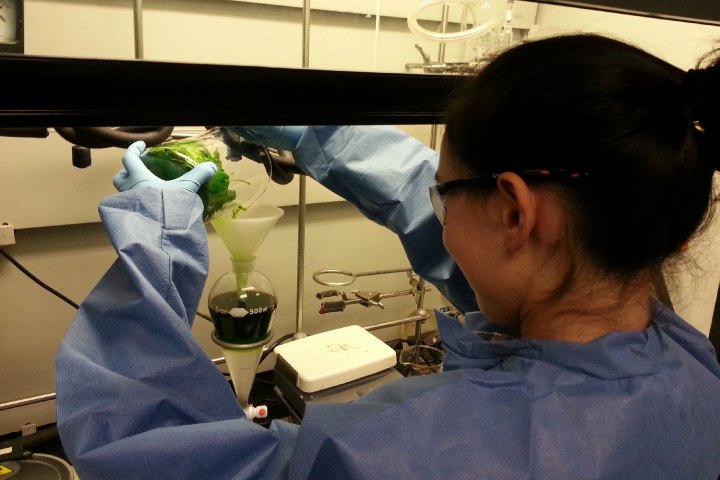
How many 15-year-old budding chemists are you aware of who hold a provisional patent for a potentially transformative invention? Friends of San Jose teenager Amy Dunphy know at least one.
For the past two and a half years, since she was in her early teens, Dunphy has been tirelessly researching an antidote to protect people from poison oak, a plant which can grow up to six feet tall and whose leaves cause a nasty allergic reaction in 80-90 percent of people.
“This isn’t something affiliated with my school work; it’s something I’ve been doing on the side,” Dunphy told Digital Trends.
She said that her extracurricular project grew out of her love of hiking in the hills around her home. “Poison oak is a plant which grows all over the place where I live,” she continued. “If you go hiking and you come into contact with it, you get an incredibly nasty, itchy rash that will last a week. It’s just miserable. I got really sick of getting it seemingly every time I went outside, so I decided to look into a way of getting rid of it.”
Unfortunately, when she started looking for an off-the-shelf solution, Dunphy found that none were available to buy. This is the point at which most teenagers (and, let’s be honest, most people regardless of age) would have given up. But Dunphy kept digging.
“If you put the chemical on your skin and then brush up against a poison oak leaf, you won’t get a rash.”
Eventually, she found that a neutralizer to urushiol — the irritating oil released by poison oak, poison ivy and poison sumac — existed, albeit not in a particularly useful form.
Instead, it was part of lacquer, the clear or colored wood finish which produces a hard, durable finish for wooden cabinetry. The oil urushiol is a key component of lacquer, although the presence of an antidote stops the majority of people suffering an allergic reaction whenever they touch a lacquered surface.
“It contained the safe allergen, but reacted into a different form,” Dunphy said. “That told me that if I could react it in a particular way it would no longer affect people. That was my goal.”
She went on to create her own solution by mixing benzoyl peroxide, an antiseptic that is regularly found in anti-acne products, with urushiol. “It’s a chemical that is safe for use on your skin and will deactivate the allergen in poison oak,” she continued. “It deactivates around 95 percent of the allergen, which is below the threshold that causes a reaction in adults. That means that if you put the chemical on your skin and then brush up against a poison oak leaf, you won’t get a rash.”
At present, Dunphy said that she is going through pre-clinical trials with her development.
“I’ve formulated it into a cream with the consistency of sunscreen,” she explained. “Next I’m planning to trial it on rodents to see if it will work in vivo. I’ve got a provisional patent, and I’ll be able to file for a full patent in the next couple of months. I’ve not spoken with any companies yet, but ultimately I’d like to turn this into a product that can be made available to everyone who suffers from poison oak.”
All in all, it’s an incredibly impressive story — and Dunphy well and truly deserves the accolades she’s been given, which so far include a 2016 Popular Mechanics “Youth Breakthrough Award” and $1,200 prize from the China Association for Science and Technology (CAST).

While we read plenty of reports about the importance of getting young people — and particularly underrepresented young women — interested in Science, Technology, Engineering, and Mathematics (STEM) subjects, it’s great to hear about someone taking the initiative without having to be forced into a classroom.
As for her own budding career, Dunphy told us that she is keen on continuing her work in STEM, but is still selecting the area that’s right for her.
“I definitely want to do something involving science, but I also really like physics as well as chemistry,” she said. “I still don’t know yet.”
If you want to find out more information about Amy Dunphy’s project you can do so by checking out her “Preventing Urushiol (Poison Oak) Induced Dermatitis by Deactivating the Allergen” here.


